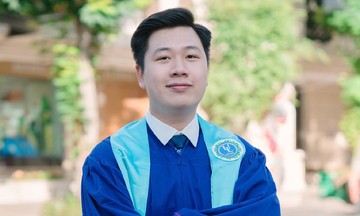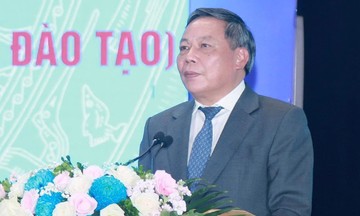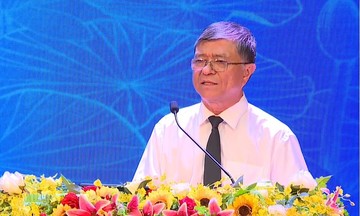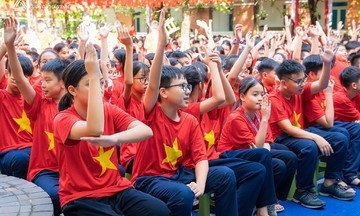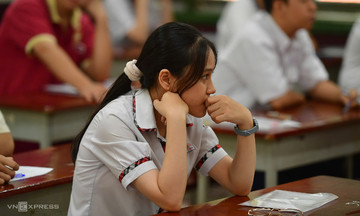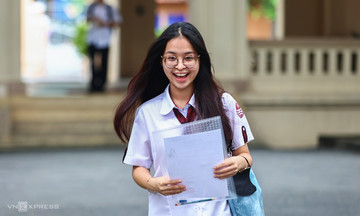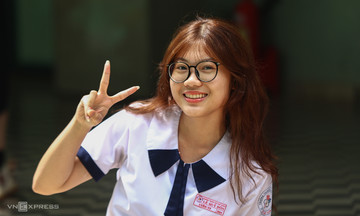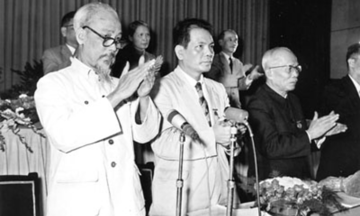Hung, 39, teaches at the High School for Gifted Students, part of the University of Science, Vietnam National University, Hanoi. At the IMO 2025 held in Australia in mid-July, one of the six problems on the exam was his. This is the 4th time a Vietnamese person has contributed a problem to the IMO, the last time being almost 40 years ago.
"The problem isn't a scientific breakthrough, but it's a memorable milestone in my elementary mathematics career," Hung said.
Hung's IMO 2025 problem and solution
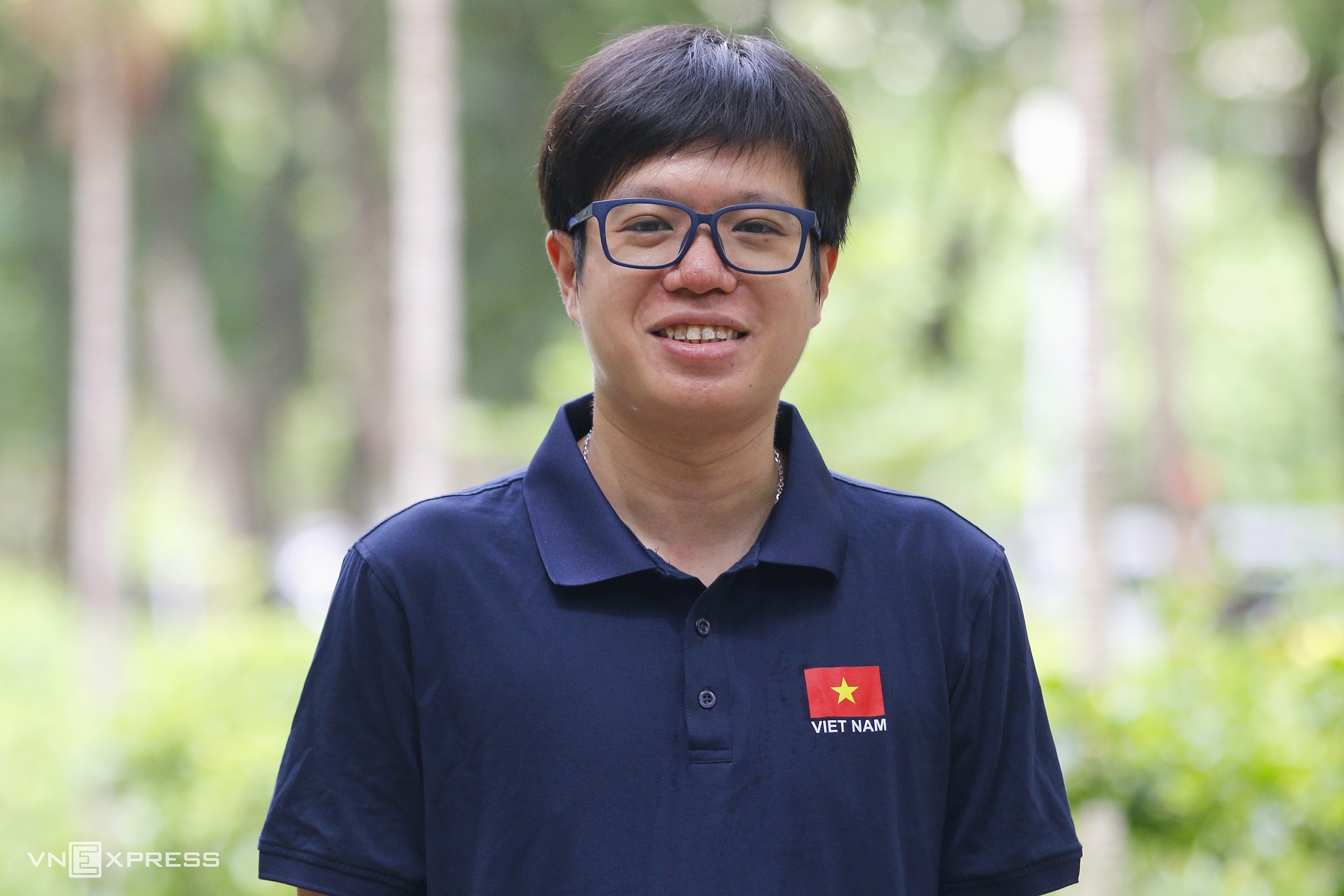 |
Tran Quang Hung at the University of Science campus, 5/8. Photo: Thanh Hang |
Hung discovered his aptitude for math in 7th grade while learning about negative numbers and functions. In geometry, he excelled at identifying and drawing auxiliary lines to solve difficult problems, easily grasping concepts as they were taught. Seeking a more intensive math education, he enrolled in the advanced math program at Chu Van An High School in Hanoi.
However, the demanding curriculum required him to balance other subjects as well. After 10th grade, Hung transferred to a regular class. This experience reaffirmed his love for math, solidifying his decision to pursue it in college. In 2024, he entered the mathematics program at the University of Science.
Initially, Hung struggled to adapt to the university's self-directed learning environment. Gradually, he adjusted, focusing on understanding fundamental concepts rather than rote memorization. His favorite subjects revolved around geometry, such as differential geometry and topology. He found probability the most challenging, as he hadn't yet grasped its practical applications.
"My four years in college were a period of immense personal and intellectual growth, forming the foundation for my teaching career," Hung reflected.
Unsure of his post-graduation plans, Hung spent six months after earning his bachelor's degree tutoring and writing books. He then contacted Associate Professor Nguyen Vu Luong, then head of the advanced math and computer science department at the University of Science, to inquire about a teaching assistant position.
"Professor Luong didn't know me. I remember him asking if I had a bachelor's degree and then giving me a trial run, teaching geometry to the gifted student team," Hung recalled.
Recognizing the opportunity, Hung meticulously prepared his lessons. After 1-2 months, Professor Luong deemed his teaching "acceptable" but challenged him to create more difficult problems. Thrilled by this encouragement, Hung excelled through multiple selection rounds and secured a teaching position at the High School for Gifted Students, where he continues to nurture young math talents.
Professor Nguyen Vu Luong, now Chairman of the Scientific and Training Council at the High School for Gifted Students, recalled that Hung wasn't the most experienced applicant. However, Professor Luong recognized Hung's exceptional talent and was impressed by his diligence and seriousness.
"Within a week, Hung prepared lesson plans for the entire semester. Teaching gifted students requires skilled and passionate teachers. That's why I insisted on hiring him," Professor Luong explained.
He praised Hung's work ethic, meticulous lesson preparation, and punctuality. Hung's geometry problems are known for their originality, creativity, and depth.
"This doesn't mean his problems involve drawing dozens of complex circles. They're difficult in the sense that the figures might appear simple, but they require deep understanding and application of multiple geometric principles. Students both fear and enjoy his challenging problems," Professor Luong shared.
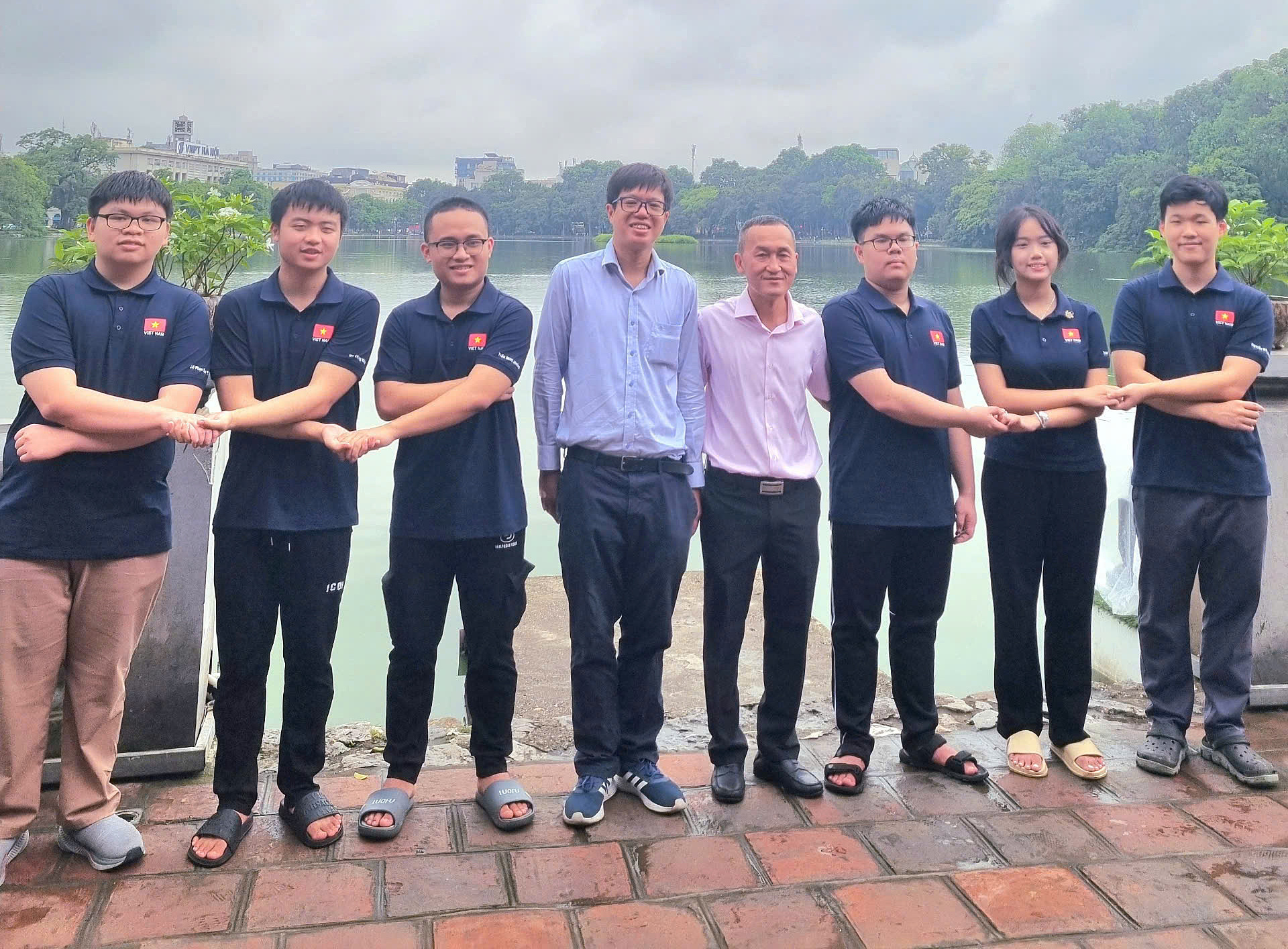 |
Hung (wearing glasses) with Dr. Nguyen Chu Gia Vuong, head of the Vietnamese delegation to IMO 2025, and the six contestants. Photo: Provided by the interviewee |
Hung's teaching philosophy involves incorporating challenging problems alongside fundamental concepts to stimulate students' thinking. He draws inspiration from classic math texts, national and international math competition problems, and the IMO. He adapts and refines existing problems to suit his students, often working until 3-4 a.m. to craft new ones.
He embraces the possibility of students surpassing him, viewing it as a positive sign of mutual learning. He guides them through his own problem-solving process and the creation of the problems themselves.
"Teaching gifted students is a continuous learning experience for me. Their enthusiasm motivates me to explore and discover new things," Hung said.
Despite his passion, Hung considered stepping back from teaching gifted students in 2019. With almost 10 years of experience and having contributed problems to national and regional exams, he yearned for international recognition.
"The problems I painstakingly created would end up in students' notebooks, eventually fading into oblivion. I wanted to create something lasting, used by generations of students and teachers," he explained.
This led him to submit a cherished problem to Professor Le Anh Vinh, head of the Vietnamese delegation to IMO 2019, for consideration.
"I had given it my all. If the problem wasn't selected, I planned to focus on further learning and stop teaching gifted students, a time-consuming endeavor," Hung recounted.
While not chosen for the final exam, his problem made the shortlist of 30. This boosted his confidence and encouraged him to persevere. In 2022, he had another problem shortlisted, and this year, his problem was selected for the IMO.
"I only learned about the selection when I saw a foreign contestant's exam paper after they left the room early. I was ecstatic but contained my excitement until the official announcement," Hung said.
The idea for the problem came to him earlier this year. He noticed that IMO problems often presented a triangle first, then required drawing a circle. He reversed this approach, starting with two intersecting circles and developing the conditions and requirements from there. It took over a month to finalize the problem.
Dr. Nguyen Chu Gia Vuong, from the Institute of Mathematics and head of this year's Vietnamese IMO delegation, recommended Hung's problem. Dr. Vuong explained that months before the competition, each country's team leader compiles up to six proposed problems and submits them to the host country's problem selection committee. The shortlist of 30 problems is then voted on by the team leaders to select the final six, a few days before the competition.
"Hung's problem received 73/137 votes in the first round and 64/89 in the second, a clear majority," Dr. Vuong revealed.
Before submitting the problem, Dr. Vuong made minor edits for clarity and accuracy. He described the problem as having a simple presentation but requiring creativity to solve.
"The problem selection committee considered it the most suitable geometry problem of medium difficulty," Dr. Vuong stated.
See IMO 2025 exam
Two geometry (G4) squares were selected for the IMO 2025 exam. Photo: Provided by Dr. Vuong
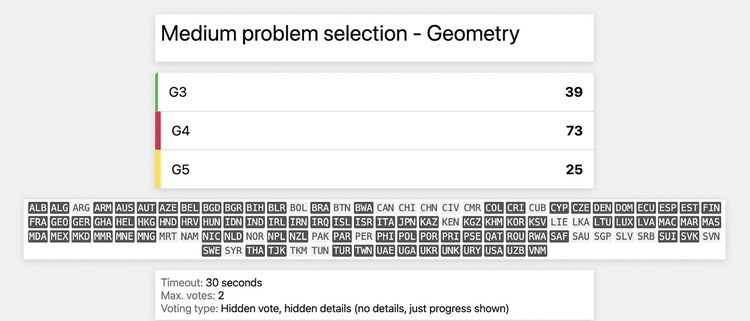 |
Known for creating challenging problems for gifted students, Hung prioritizes fairness. After finalizing an exam, he sets aside the problems and focuses on teaching. He addresses concerns about the practicality of such difficult problems by acknowledging the importance of basic math skills for everyday life.
However, he argues that these competitions identify and nurture exceptional talent, inspiring other students and contributing to advancements in research and development. This, in turn, fuels educational progress and national development.
"I've known Professor Ngo Bao Chau since college and have followed his research. My interest in him isn't about getting a perfect score in analysis, but about recognizing the passion and valuable contributions people make to mathematics and humanity," Hung explained. "This inspires me and fuels my love for math."
Thanh Hang



